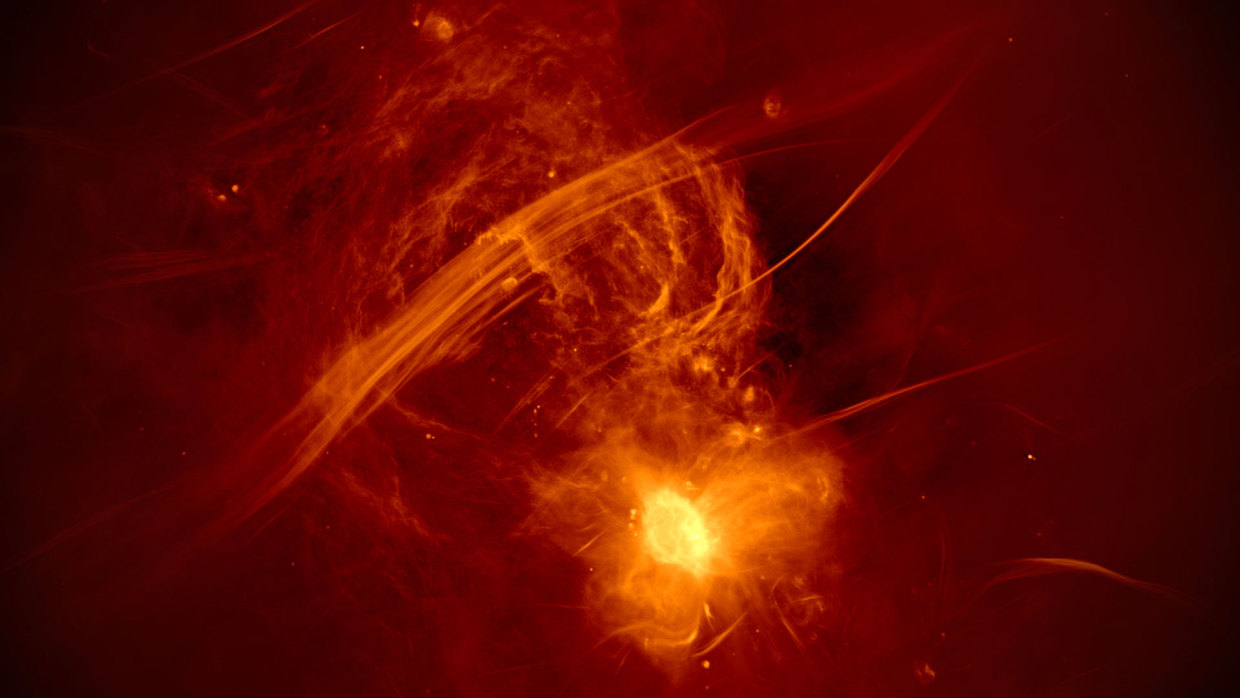‘Remarkable’ image of our galaxy’s center revealed

A new MeerKAT telescope image of the galactic center reveals the “complex heart” of the Milky Way, with astronomers saying they now have “the best insight yet into the population of mysterious ‘radio filaments’ found nowhere else.”
Released by the South African Radio Astronomy Observatory, the “remarkable” image is based on a mosaic of 20 separate observations, which took a total of 200 hours of MeerKAT telescope time to acquire.

The super-sensitive radio telescope consists of 64 antennas spread over a diameter of eight kilometers in the South African desert. It has allowed humanity to look into the center of the Milky Way, which, despite its relative closeness – it is just about 25,000 light-years away – is obscured by dust and gas and is very hard to penetrate.
The picture is dominated by the emission from the galactic center “super bubble,” which is traversed by many parallel radio-emitting magnetized threads astronomers call filaments.

One of the strands has been lovingly nicknamed “Mouse” by the scientists; another feature is being called “Snake.” The supermassive black hole Sagittarius A can be seen as the brightest spot.
The clarity and depth of the image give it significant scientific potential, the astronomers say.

“Up to 100 light-years long, these unique structures have defied a conclusive explanation for their origin since discovery over 35 years ago. MeerKAT has discovered many more such filaments than were previously known, and the new data release will allow astronomers to study these objects as a population for the first time,” the report reads.
The astronomers admit their own fascination over the discoveries, with SARAO chief scientist Dr. Fernando Camilo saying that “the best telescopes expand our horizons in unexpected ways.” The lead author of the study, Dr. Ian Heywood, confessed that he never gets tired of looking at the picture.












